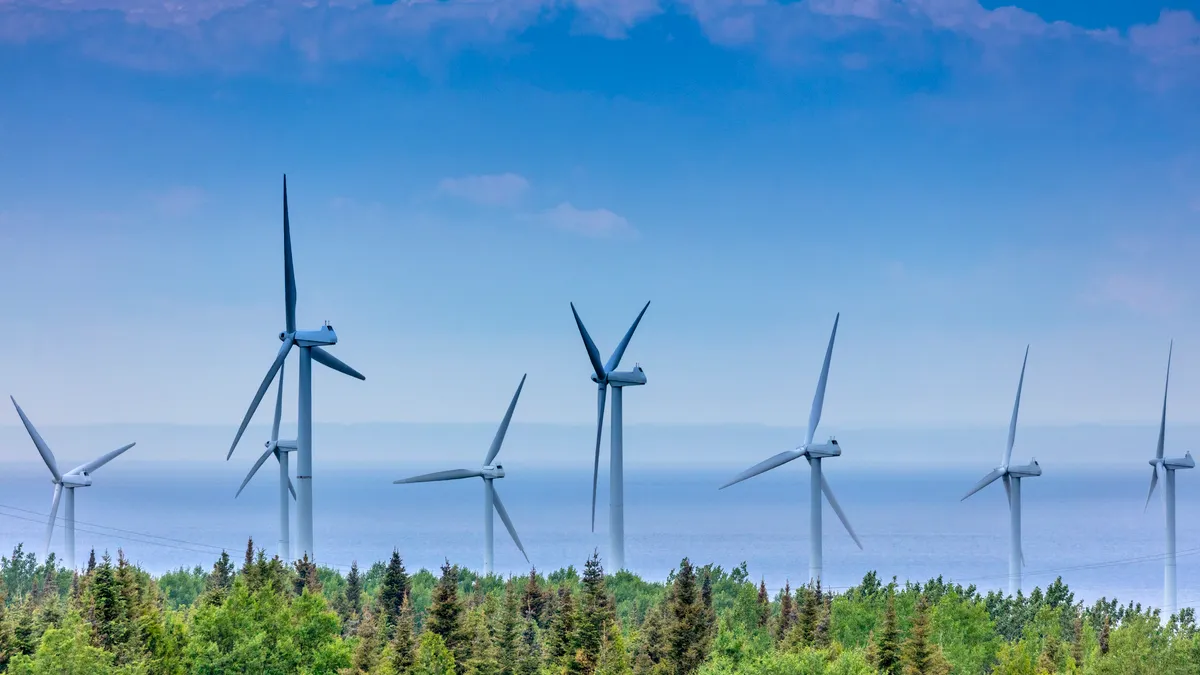Dive Brief:
-
After receiving environmental approval, EverWind Fuels Co. is moving forward with plans to build a $6 billion facility in Point Tupper, Nova Scotia, that will be capable of producing up to 1.1 millions tons (1 million metric tons) of green hydrogen and clean ammonia per year.
-
Although the first phase of the project will be powered by power purchase agreements, the company also plans to build a 2-GW wind farm to supply power by the time the facility reaches full capacity.
-
Gigawatt-scale green hydrogen projects are no longer a rarity. Multiple such projects are in the works around the world, according to Mona Dajani, global head of the energy and infrastructure practice at law firm Shearman & Sterling. However, Dajani said the Point Tupper project is notable in that it has already secured two offtakers.
Dive Insight:
Canada is looking to enter the green hydrogen game with an early at-scale green hydrogen and ammonia project in Nova Scotia.
The project is on track to begin construction before this year’s midpoint and should be capable of producing just under 2,200 tons of green hydrogen annually by 2025, potentially making EverWind Fuels Co. one of the first independent green hydrogen producers in the world, according to a company announcement released last week.
EverWind Fuels Co. plans to scale the site up to 1.1 million tons of production annually following the construction of a 2-GW onshore wind farm to power its production in 2026. Green hydrogen is produced by using electrolysis to split water into its component parts of hydrogen and oxygen. While conventional hydrogen is derived from natural gas, it’s considered “clean” or “green” when the electricity that powers the electrolysis process comes from renewable sources. EverWind Fuels also plans to make green ammonia, which is produced by combining green hydrogen with nitrogen, at the Point Tupper site. Ammonia is considered easier to store and transport than hydrogen, and it’s a key component of in-demand, hard-to-decarbonize products such as fertilizers.
EverWind Fuels determined that building its own, dedicated power supply was necessary to secure adequate renewable energy for the project, according to a company statement provided to Utility Dive. The company is also pursuing a second 2-GW green hydrogen project on the Burin Peninsula in Newfoundland and Labrador.
Canada is not, broadly speaking, a major player on the hydrogen front, Dajani said. The largest hydrogen projects currently in the works are dispersed across Europe, Asia, the Middle East, and the Gulf Coast of the United States. However, Dajani said that the Point Tupper project is notable in that it has secured two viable offtakers — E.ON and Uniper — for the hydrogen it plans to produce.
It’s not that there’s a shortage of would-be offtakers for green hydrogen, Dajani said. She’s been involved in negotiations involving airlines, turbine manufacturers, major utilities, and food companies. The latter group may sound like an unusual fit, but major food corporations are interested in hydrogen for, among other things, its potential use in fertilizer, which saw prices rise 300% in 2022. However, most of these projects remain stuck in a chicken-and-egg scenario, she said: Project developers want to build hydrogen plants. Offtakers want to buy green hydrogen. But each is waiting for the other to make the first move.
Dajani doesn’t expect the current gridlock to last much longer. She anticipates gigawatt-scale green hydrogen projects with committed offtakers will be announced in the U.S. within the next year, although at the moment, she said, she can’t name the specific companies that are in the lead.
Much of the current U.S. activity is a result of the Inflation Reduction Act, she said. Green hydrogen subsidies and incentives within the act effectively cut the cost of green hydrogen development by half, adding to the $8 billion-plus grant opportunities that were already underway at the Department of Energy to promote green hydrogen development. This influx of spending has some large companies, including oil majors and some of the largest utilities in the U.S., racing to get ahead of the likely flood of competition in hydrogen production.













